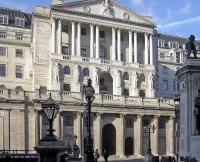Wales is a country within the United Kingdom, situated on the island of Great Britain. Bordered by the Irish, Bristol, and Celtic Seas, and England to the east, it has a population of 3.2 million (2021) and covers 21,218 square kilometers, including over 2,700 kilometers of coastline. The landscape is predominantly mountainous, featuring Snowdon as its highest peak. Wales experiences a temperate, maritime climate. Cardiff serves as its capital and largest city.
1901: Percentage of Welsh speakers
In 1901, just under 50 percent of the Welsh population could speak the Welsh language.
1904: Welsh Revival
In 1904–1905, the Welsh Revival started through the evangelism of Evan Roberts.
1905: Welsh Revival
In 1904–1905, the Welsh Revival started through the evangelism of Evan Roberts.
1907: Welsh Department for the Board of Education
In 1907, the Welsh Department for the Board of Education was established, marking Wales's first significant educational devolution.
1911: Population of Wales reaches 2,421,000
By 1911, the population of Wales had reached 2,421,000, with significant growth in coal mining districts like Glamorganshire.
1911: Welsh speakers
In 1911, 43.5 percent of the Welsh population were able to speak the Welsh language.
1913: Peak of coal production in South Wales
In 1913, South Wales coalfield reached its peak production with nearly 233,000 men and women employed, mining 56 million tons of coal.
1914: Strengthened political culture
From the mid 19th century until 1914, Wales experienced a strengthened political culture, religious and cultural revival, renewed interest in Welsh literature, the revival of eisteddfodau.
1914: Welsh Church Act
In 1914, the Welsh Church Act was established.
1920: Disestablishment of the Church in Wales
In 1920, the Church in Wales was disestablished from the Church of England under the Welsh Church Act 1914.
1922: Wales votes Labour
Since 1922, Wales has voted Labour in every general election.
1925: Formation of Plaid Cymru
In 1925, Plaid Cymru, a nationalist party, was formed in Wales.
1946: National Health Service Act
The National Health Service Act 1946 originally formed NHS Wales as part of the NHS structure for England and Wales.
1956: Gower Peninsula
In 1956, the Gower Peninsula was the first area in the United Kingdom to be designated as an Area of Outstanding Natural Beauty.
1962: Formation of the Welsh Language Society
In 1962, the Welsh Language Society was formed.
1967: Repeal of the Wales and Berwick Act
The Wales and Berwick Act 1746 was repealed with regard to Wales in 1967.
1969: Secretary of State for Wales gains powers over NHS
In 1969, powers over the NHS in Wales came under the Secretary of State for Wales.
1971: Decimalisation of coinage in the UK
Since decimalisation in 1971, at least one of the circulating coins emphasized Wales.
1972: Population of Wales
In 1972, the population of Wales stood at 2.74 million and remained broadly static for the rest of the decade.
1980: The Royal Mint relocated to Llantrisant
In 1980, The Royal Mint, responsible for issuing the coinage of the UK, was based at a single site in Llantrisant.
1981: Welsh speakers
In 1981, 18.9 percent of the Welsh population were able to speak the Welsh language.
1988: Bank of Scotland takeover of Commercial Bank of Wales
In 1988, the Commercial Bank of Wales, established by Sir Julian Hodge, was taken over by the Bank of Scotland.
1991: Welsh speakers
In 1991, 18.7 percent of the population could speak Welsh.
1995: Welsh one pound coin
In 1995, at least one of the coins in circulation emphasized Wales, such as the one pound coin.
1996: Sea Empress oil spill
Because of offshore rocks and unlit islands, Anglesey and Pembrokeshire are still notorious for shipwrecks, most notably the Sea Empress oil spill in 1996.
1996: Local government areas divided
For the purposes of local government, Wales has been divided into 22 council areas since 1996.
1997: Devolution in Wales
Following devolution in 1997, the Government of Wales Act 1998 created a Welsh devolved assembly, the National Assembly for Wales.
1998: Government of Wales Act
In 1998, The Government of Wales Act 1998 created a Welsh devolved assembly, the National Assembly for Wales, with the power to determine how Wales's central government budget is spent and administered.
1998: Government of Wales Act created a devolved Welsh assembly
In 1998, the Government of Wales Act created a devolved Welsh assembly for the first time, now renamed the Senedd or Welsh Parliament.
1998: Formation of the Senedd
In 1998, the Senedd (Welsh Parliament, formerly the National Assembly for Wales) was formed, responsible for a range of devolved policy matters.
1999: Welsh Assembly gains responsibility for NHS Wales
In 1999, responsibility for NHS Wales was passed to the Welsh Assembly under devolution.
2000: Welsh one pound coin
In 2000, at least one of the coins in circulation emphasized Wales, such as the one pound coin.
2001: Jewish community in Wales
By 2001, the Jewish community in Wales had declined to approximately 2,000.
2001: Increase in Welsh speakers
The 2001 Census showed an increase in the number of Welsh speakers to 21 percent of the population aged 3 and older.
2001: Increase in population between 2001 and 2011
The Wales population increase between 2001 and 2011 was 5 percent.
2002: Commercial Bank of Wales absorbed into Bank of Scotland
In 2002, The Commercial Bank of Wales was absorbed into its parent company, the Bank of Scotland.
2002: Economic output per head in Wales
In 2002, the economic output per head in Wales stood at 90 percent of the EU25 average and around 80 percent of the UK average.
2005: Wales and Cheshire Circuit
In 2005 the Wales and Cheshire Region (known as the Wales and Cheshire Circuit) was still known as such.
2006: Government of Wales Act reformed
Eight years later, in 2006, the Government of Wales Act 2006 reformed the National Assembly for Wales and allowed further powers to be granted to it more easily. The Act also created a system of government with a separate executive, the Welsh Government, drawn from and accountable to the legislature, the National Assembly.
2006: Cancellation of Swansea to Cork ferry service
In 2006, the Swansea to Cork ferry service was cancelled.
2006: Number of district hospitals in Wales
In 2006, there were seventeen district hospitals in Wales.
2007: End of the Wales and Cheshire Region
In 2007 the Wales and Cheshire Region (known as the Wales and Cheshire Circuit before 2005) came to an end when Cheshire was attached to the North-Western England Region. From that point, Wales became a legal unit in its own right, although it remains part of the single jurisdiction of England and Wales.
June 2008: Wales awarded Fairtrade status
In June 2008, Wales became the first nation to be awarded Fairtrade status.
2008: Last designs devoted to Wales
In 2008, the last designs devoted to Wales saw production.
March 2010: Reinstatement of Swansea to Cork ferry service
In March 2010, the Swansea to Cork ferry service was reinstated.
2010: Wales should be referred to as a country
In 2010, the Counsel General for Wales, John Griffiths, stated that Wales should properly be referred to as a country.
March 2011: Referendum held
Under powers approved by a referendum held in March 2011, it is empowered to pass primary legislation, at the time referred to as an Act of the National Assembly for Wales but now known as an Act of Senedd Cymru in relation to twenty subjects listed in the Government of Wales Act 2006 such as health and education.
2011: Successful referendum
Following a successful referendum in 2011, the National Assembly was empowered to make laws, known as Acts of the Assembly, on all matters in devolved subject areas, without requiring the UK Parliament's approval of legislative competence.
2011: Percentage increase among people who identified Romania as their country of birth
From 2011 to 2021, the biggest percentage increase was seen among people who identified Romania as their country of birth.
2011: Census religion
In 2011, 32.1 percent in Wales had "No religion".
2011: Wales is updated and referred to as a country
In 2011, ISO 3166-2:GB was updated and the term 'principality' was replaced with 'country'.
2011: Muslim population in Wales
In the 2011 census, there were 24,000 (0.8 percent) reported Muslims in Wales.
2011: Establishment of the Coleg Cymraeg Cenedlaethol
Since 2011, Welsh-medium higher education has been supported by the Coleg Cymraeg Cenedlaethol (Welsh-language National College) as a delocalised federal institution.
2011: Increase in population between 2001 and 2011
The Wales population increase between 2001 and 2011 was 5 percent.
2011: Welsh Language Measure 2011
The Welsh Language (Wales) Measure 2011 legislated Welsh as an official language in Wales.
2012: Latest Welsh designs
As of 2012, the last coin designs devoted to Wales were produced in 2008.
2012: Withdrawal of Swansea to Cork ferry service
In 2012, the Swansea to Cork ferry service was withdrawn again.
2015: Reintroduction of the pine marten
The pine marten, which has been sighted occasionally, has been reintroduced in parts of Wales since 2015, having previously not been officially recorded since the 1950s.
December 2017: Employment rate
In the three months to December 2017, 72.7 per cent of working-age adults were employed in Wales, compared to 75.2 per cent across the UK as a whole.
2017: Intra-Wales flights operated by Eastern Airways
Since 2017, intra-Wales flights ran between Anglesey (Valley) and Cardiff, and were operated by Eastern Airways.
2018: GDP in Wales
In 2018, gross domestic product (GDP) in Wales was £75 billion, an increase of 3.3 per cent from 2017. GDP per head in Wales in 2018 was £23,866, an increase of 2.9 per cent on 2017.
2018: Education spending in Wales
In 2018/19, Wales spent £1.8 billion on education, which was almost the same as the UK government's £1.75 billion expenditure on the military in Wales.
2019: Jewish community in Wales
As of 2019, the Jewish community in Wales only numbers in the hundreds.
2019: Blue Flag beaches
As of 2019, the coastline of Wales had 40 Blue Flag beaches, three Blue Flag marinas and one Blue Flag boat operator.
2019: Net exporter of electricity
In 2019, Wales was a net exporter of electricity. It produced 27.9 TWh of electricity while only consuming 14.7 TWh.
May 2020: National Assembly renamed
In May 2020, the National Assembly was renamed "Senedd Cymru" or "the Welsh Parliament", commonly known as the Senedd in both English and Welsh.
2020: COVID-19 pandemic impacts Welsh economy
During 2020, the COVID-19 pandemic's restrictions and lockdowns affected all sectors of the Welsh economy.
March 2021: Beavers released
In March 2021, Natural Resources Wales (NRW) granted a licence to release up to six beavers in the Dyfi Valley, the first official beaver release in Wales.
2021: Welsh speaking population in Wales
According to the 2021 census, the Welsh-speaking population of Wales aged three or older was 17.8 per cent (538,300 people).
2021: Poland continues to be the most frequent country of birth outside Wales
In 2021, Poland continued to be the most frequent country of birth outside Wales.
2021: Population of Wales
In 2021, Wales had a population of 3.2 million.
2021: Renewable energy
In 2021, the Welsh government said that more than half the country's energy needs were being met by renewable sources, 2 per cent of which was from 363 hydropower projects.
2021: Maintained schools in Wales
In 2021–2022, there were 1,470 maintained schools in Wales.
2021: Census religion
The 2021 census recorded that 46.5 percent in Wales had "No religion".
2021: National Survey for Wales
The National Survey for Wales in 2021–22 reported that 72 percent of adults surveyed had good or very good general health, 19 percent had fair general health and 8 had bad or very bad general health.
2021: Wales population in 2021
The resident population of Wales in 2021 according to the census was 3,107,500.
2021: COVID-19 pandemic impacts Welsh economy
Well into 2021, the COVID-19 pandemic's restrictions and lockdowns affected all sectors of the Welsh economy.
June 2022: Percentage of people that could speak Welsh
In June 2022, other estimates suggest that 29.7 per cent (899,500) of people aged three or older in Wales could speak Welsh.
September 2022: Wrexham becomes Wales' seventh city
In September 2022, Wrexham, North Wales' largest settlement, was officially granted city status, becoming Wales' seventh city.
2022: Discontinuation of intra-Wales flights
As of 2022, intra-Wales flights between Anglesey (Valley) and Cardiff, which had been operated by Eastern Airways, are no longer available.
2022: Pupils and teachers in Wales
In 2021–22, Wales had 471,131 pupils taught by 25,210 full-time equivalent teachers.
2022: Wrexham becomes a city
In September 2022, Wrexham, north Wales's largest settlement, became Wales's newest and seventh city.
2024: 2024 general election
At the 2024 general election, 27 Labour and Labour Co-op MPs were elected, along with 4 Plaid Cymru MPs and 1 Liberal Democrat MP from Wales.
Mentioned in this timeline

Wrexham is a city located in north-east Wales near the...
England a constituent country of the United Kingdom occupies roughly...

A bank is a financial institution that plays a crucial...

September is the ninth month of the year in the...

A community is a social unit defined by shared characteristics...
An economy encompasses the production distribution trade and consumption of...
Trending
3 months ago Colorado I-70 Traffic Gridlock: Georgetown Reopens After Leaf-Peeping Blockade and Delays.

27 days ago Joseph Quinn's 'Stranger Things' impact, 'Master of Puppets' fame, and 'Pillion' BIFA win.

26 days ago Sabrina Carpenter slams Trump White House for using 'Juno' in ICE video.

2 months ago Della Maddalena Praised Makhachev, Pimblett Favors Him; Bisping Sees Warm-Up Fight

Coldplay is a British rock band formed in London in comprising Chris Martin Jonny Buckland Guy Berryman and Will Champion...
4 months ago Lord Huron Concert Scenes and Horizon Hits with Shinedown and Gabby Barrett
Popular

XXXTentacion born Jahseh Dwayne Ricardo Onfroy was a controversial yet...

Stranger Things created by the Duffer Brothers is a popular...
The Kennedy Center Honors are annual awards recognizing individuals and...

Candace Owens is an American conservative political commentator and author...

William Franklin Graham III commonly known as Franklin Graham is...
Turning Point USA TPUSA is an American nonprofit organization founded...